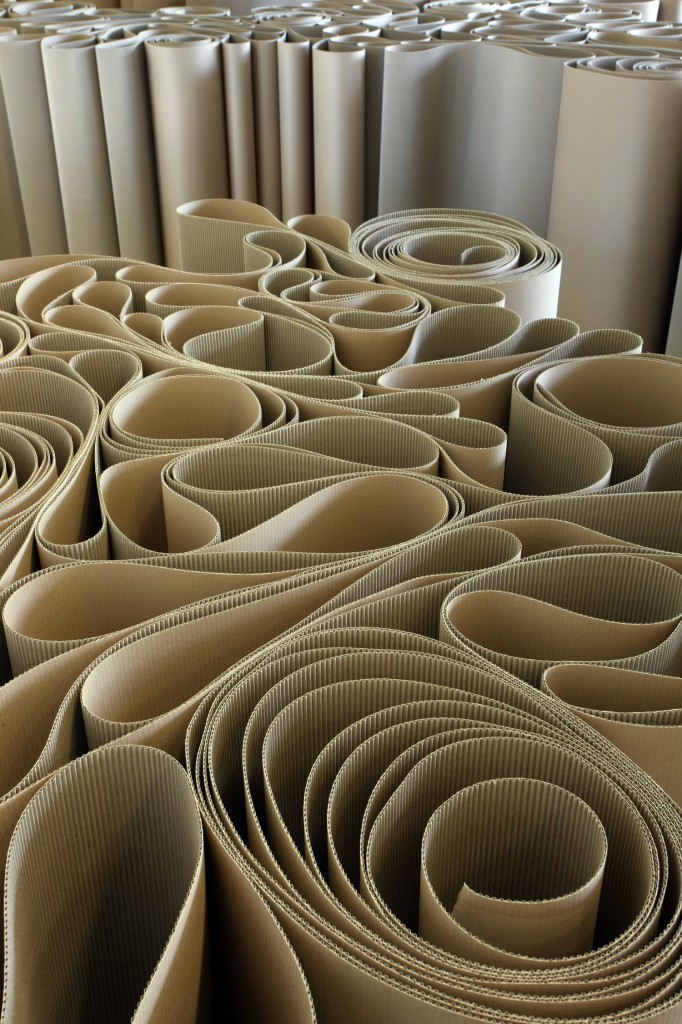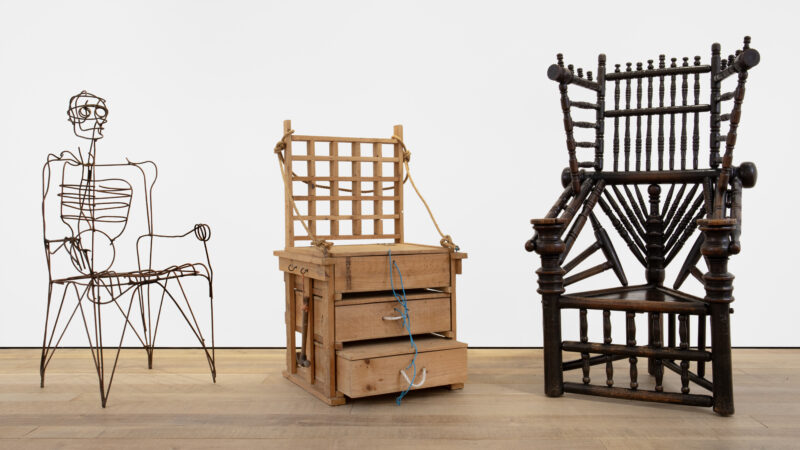
Image:Michelangelo Pistoletto Installation view, Serpentine Gallery, London
(12 July – 17 September 2011) © 2011 Sebastiano Pellion
Michelangelo Pistoletto, poet of the mirror, sage of the arte povera movement, is so famous in his native Italy and so admired abroad that it is amazing he has never before had a one-man show in London. And what a beautiful experience it turns out to be. You wind your way through his labyrinth, moving from one sequestered sanctuary to another, pondering the cumulative connections until you are returned to the place where you began, which suddenly acquires an entirely new meaning. It is the best use of the Serpentine’s circle of galleries imaginable.
And the imaginable (or unimaginable) is exactly what Pistoletto has in mind. His vision is nothing less than heaven itself. What can we imagine going on up there, through there, along there, wherever it may be? (The show manages to encompass all these different orientations with remarkable clarity.)
And what do we imagine it to be, this atmospheric dimension of infinity in which all manner of things will be well: a blank, an immense lightness, a teeming convocation representing the bodily resurrection? Again, all these possibilities are very purely and simply invoked in The Mirror of Judgement.
Simplicity has always been his modus operandi. A lynchpin of the 60s poor art movement, Pistoletto worked with cheap materials such as rags, mirrors and newspapers, long before today’s conceptualists. Now in his late 70s, he still lives and works at Cittadellarte, the creative laboratory he founded in the Alpine town of Biella, to merge the best of art with religion, economics and politics.
The starting point of his paradise is the opening gallery at the Serpentine, where a disc of mirror on the floor shows us the cupola above, containing the sky more or less in the manner of a James Turrell installation: that is to say, so that one is aware of the scudding clouds and ever-changing light effects as if they were both a framed painting and a moving picture projected on a screen.
But drawing one away from this optical pleasure is a mass of corrugated manila cardboard of the sort used for packing – bales of it upended and scrolling around one gallery and into the next. It stands at waist height and looks from above very like the rippling layers of chocolate in a Cadbury’s Flake. Its fragility is self-evident, its mundane associations obvious. Catch your clothes on it by accident and it gives a faint but melodic riff.
But the broad effect is of enticing fields of corn and swirling clouds seen as if in diagram – the sort that might just as well appear on a medieval map, an Indian scroll, a Persian carpet, a Renaissance altarpiece. The associations are beguilingly clear and apt.
For all through the show, visitors are led into unexpected enclaves, each of which is fitted with mirrors and some sort of religious object. A Victorian prie-dieu, carved with a commemorative inscription; a prayer carpet; a full-scale Buddha who stands sublimely contemplating himself in the mirror, as we too are able to see ourselves wherever we go.
You might imagine being in a synagogue or examining yourself kneeling and praying to Allah. Mirrors are arched to form the Tablets of the Law or placed to face in the direction of Mecca. They multiply everybody around you and simultaneously present a religious democracy. In no time at all, and very surprisingly, the galleries feel like another world.
Pistoletto’s mirrors are never quite as simple as they appear. At the Serpentine, some are slightly tinted, giving a look of the past, while others seem brighter than they should be. Mirrors never give the world back exactly as it is, in any case, reflecting everything slightly smaller than life. And this has the effect of turning visitors into smaller versions – depictions – of ourselves, wending our way through the passing pageant, and narrative, of life.
Mirrors always imply self-scrutiny in Pistoletto’s art and here they are positioned to show us a society made up of monotheistic religions. An atheist might find this satirical, but that is not the tone or structure of the show. The overwhelming sense is of open-armed generosity towards everyone in their journey through life.
For followers of Pistoletto, the show may well stand as a retrospective by other means. Here is his Well from 1965, in which people peered over a wall and saw themselves quite dissociated and alien in the mirror far below; his curious aluminium trumpets that could never sound clearly at the Last Judgment but which hark back to the loudspeakers on which he heard Mussolini’s speeches broadcast as a child.
And in the central gallery is a ring of three linked ovals suspended from the ceiling and pierced in the middle by a vast mirrored obelisk that instantly evokes the classical Italy of the Romans. The ovals form the symbol of infinity, which is itself illustrated by the obelisk in so far as every single viewer sees it from a slightly different angle and in a different way – oppressive, stunning, exhilarating, stringently architectural, powerfully spiritual (these were overheard responses) and so on.
Faith and objectivity, fellow feeling and individuality: all were occasioned by that bright, dematerialising object – and what it points to, once again, is the fathomless, abstract sky.
One cannot overstate the simplicity of Pistoletto’s means and methods, nor their effect. Everything is so plainly itself – a bit of cardboard, a piece of mirror – that nothing can distract from his equally lucid metaphors.
A labyrinth is a guideless journey through which one must find one’s own way, as in life. It is also a path one must follow, however haphazardly, to get to the exit. In Pistoletto’s exhibition, one turns and turns, looking for the centre, the crux, the path, only to catch oneself searching in the mirror. Oneself and everyone else as well: for although we are all brought up to different religions, we seem to share a putative destination – a heaven that is full of us.
As for the final experience, one returns to the cupola, and its reflection, and discovers in these images an escape route, a phantasm, a stairway to heaven: each endlessly reflected. How will it all end?
guardian.co.uk © Guardian News & Media Limited 2010
Published via the Guardian News Feed plugin for WordPress.









